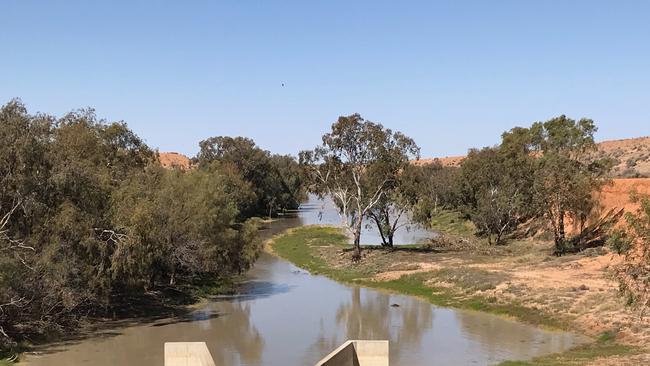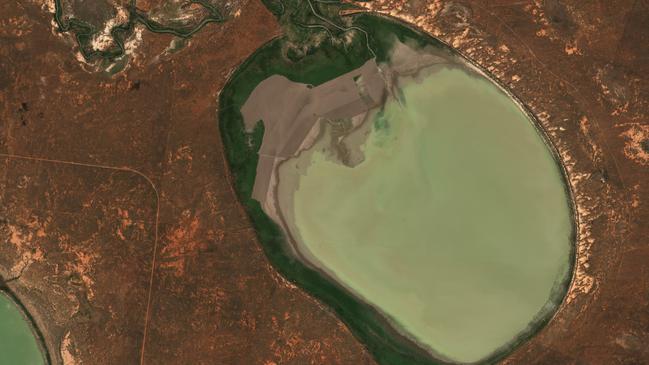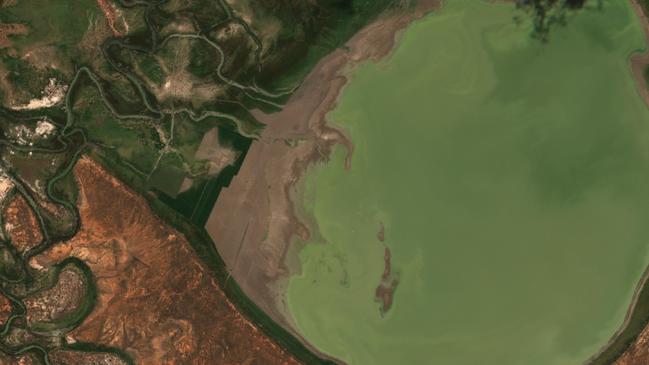Flood bounty: Cropping of Darling Anabranch lakes begins
Farmers are cropping the lakebeds of the Great Darling Anabranch system, as floodwaters evaporate to expose nutrient-rich soils.

The once-in-a-decade revival of lakebed cropping in arid southwestern NSW has begun.
The floodwaters that swept into the ephemeral lakes of the Great Darling Anabranch early this year are fast evaporating, exposing moist, nutrient rich soils that will grow thousands of hectares of crops.
Satellite images show where Roo Roo Station owner Gary Hill sowed cereals into the exposed bed of Travellers Lake three weeks ago without the need for fertiliser, given the floods have carried silt from as far as Queensland, down the Darling River into the Anabranch.

“The water came in all cloudy and muddy,” Mr Hill said. “(It’s) all pelican piss and Sir Joh’s top soil.”
Once the water recedes further and the soil temperature rises above 16 degrees, Mr Hill and son Alex will sow sorghum and sunflower crops into the lakebed.
Like other families in the region, the Hills’ core business is grazing sheep, on predominantly native arid-zone pastures.
Asked about the cost of holding onto machinery to cultivate a crop or two once a decade, Mr Hill said it was not a complex operation.
“We use a blade (plough) to work it and then harrow it with Kelly chains, then sow it with air-seeder,” Mr Hill said.
He did sell the tractor after the last harvest in 2013, but bought another in late December 2021, when what turned out to be a false flood pulsed down the Darling River.
On nearby Lake Mindona, John Clothier says he has put in 100ha of oats, “working the edge as it goes back”.

The region’s isolation and infrequency of cropping means weeds and pests are at a minimum, allowing lakebed farmers to grow organic crops.
“We’ve been lucky,” Mr Clothier said. “We get a few bugs at some time, but what crop grows doesn’t seem to be much affected.”
As for yields, Mr Clothier said “people say you can grow a crop without rain, and you can”, but that a few falls really helped lift production, which were generally 2 to 3 tonnes a hectare.
As for the argument that they were getting free water, without a licence, Mr Clothier said it was floodwater, there were no structures in place to harvest it and they were prohibited from cultivating the centre of the lake, which acted as a refuge.




